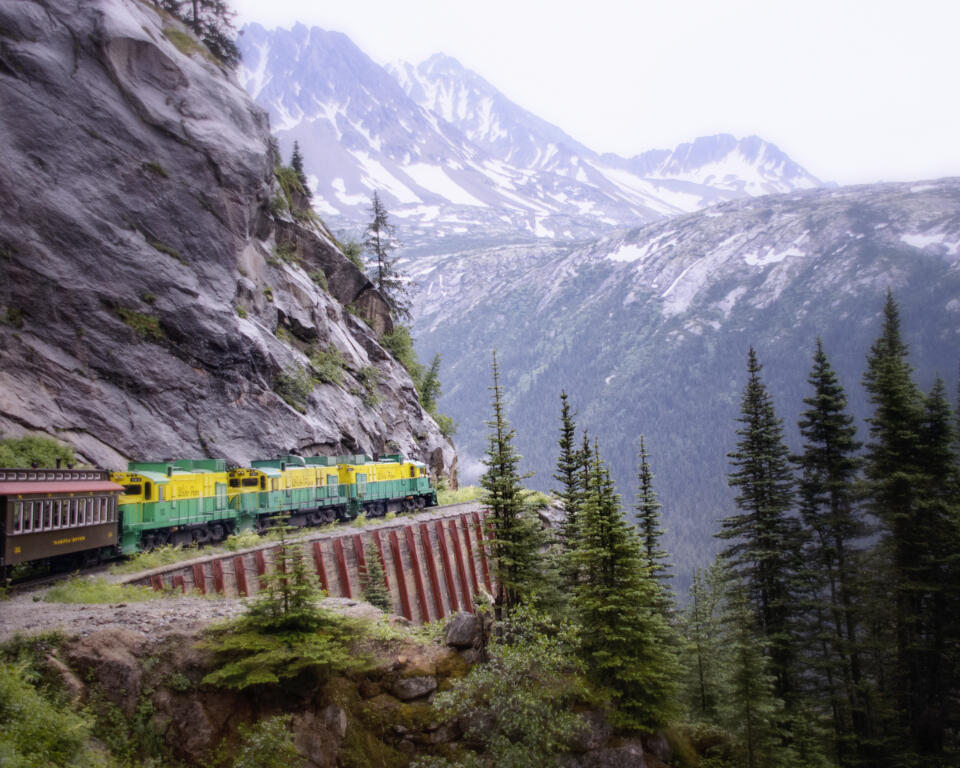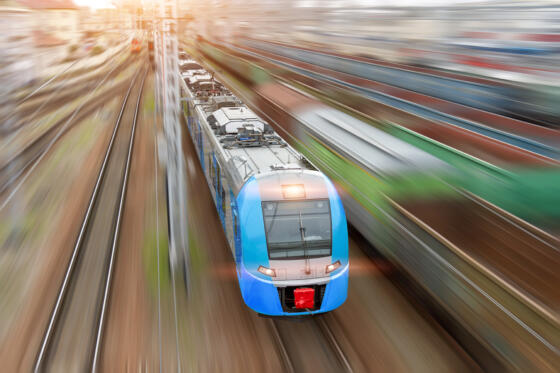
Amazing trains
Inter-city rail on the roof of the world

Where
Lhasa Express in the Himalayas
Wow!
Its route between Lhasa in Tibet and Xining, the capital of Qinghai province in China, holds as many as three world records: highest railroad (up to 5.072 meters/16,640 feet), highest train station (Tanggula, 5,068 meters/16.627 feet) and highest tunnel (Fenghuoshan, 4,905 meters/16,092 feet). Nearly 90 percent of the 1,956 kilometers (1,215 miles) through the Trans-Himalaya Mountain Range are at an elevation of more than 4,000 meters (13,123 feet).
Other interesting facts
The railroad that was opened in 2006 is Tibet’s main traffic artery. A train ride from Lhasa to Xining takes 17 hours. The route is electrified only in some sections. At the highest elevations, it takes up to three diesel locomotives to pull the 16 railcars. That’s the only way to compensate for the power loss of the IC engines caused by the lower oxygen content of the air at such altitudes. In addition, the permafrost ground on 550 kilometers (342 miles) of the mountain railroad required a special technical solution. Steel tubes filled with ammonia were driven deep into the ground to prevent thawing and to permanently stabilize the track system. Rough grids of stone to the left and right of the tracks prevent an accumulation of sand from huge wandering dunes.
Zigzag course around the “Devil’s Nose”

Where
Trans-Andean Railway in Ecuador
Wow!
The topography at the “Devil’s Nose” calls for spectacular shunting. To route the tracks around a sharp, dizzyingly steep bluff called “Nariz del Diablo,” they’d actually have to be laid in serpentines – but then no train could run on them. The solution was to route the train around the cliff on a zigzag course. And this is how it works: The train traveling uphill or downhill coasts at walking speed into a “dead-end track” at every hairpin turn. The switch at the entrance to the turn is changed to reverse the diesel locomotive’s direction of travel before the train moves on to the next “bend.”
Other interesting facts
The “Devil’s Nose,” whose name derives from the large number of railroad workers who died during its construction (1899–1908), is a twelve-kilometer (7.5-mile) section of the train service between Ecuador’s capital Quito in the north and Guayaquil on the west coast. The spectacular train is very popular with (rail) tourists and can be taken as a day trip.
Climbing tour without cables or cogs

Where
Pöstlingbergbahn in Linz (Austria)
Wow!
Although it has to handle uphill and downhill gradients of up to 11.2 percent the electrical energy that drives it is transferred to the steel tracks strictly via the steel wheels of the multiple unit (MU). Additional cable or cog drives that are typical for mountain railways are not used in this case. Such an adhesion railway featuring a drive concept normally used for regular trains can climb a theoretical maximum of 13 percent. There’s hardly another train or tram that comes as close to this limit as the one at Pöstlingberg in Linz.
Other interesting facts
The construction of the nearly three-kilometer (1.9-mile) Pöstlingbergbahn between 1888 and 1898 was mainly motivated by the visitors flocking to the St. Mary’s Pilgrimage Church atop Linz’ local mountain. In 2008, the single-track railroad was regauged from 1,000 (3 ft 3/8 in) to 900 millimeters (2 ft 11 7/16 in) enabling its connection to the city’s tram network. Four new accessible MUs with an optimized braking system have been standard since then. As before, no other railcars are connected to the MUs due to the steep downward gradient. Top speed: uphill 12 km/h (7.5 mph), downhill 13.5 km/h (8 mph).
Train traffic at the limit

Where
Chemin de fer Congo-Océan in Congo
Wow!
The 502-kilometer (312-mile) railroad between the capital Brazzaville in the southeast of the Republic of Congo and the Atlantic port city of Pointe-Noire is regarded as the country’s “lifeline,” albeit a lifeline whose construction (1921–1934) claimed the lives of more than 17,000 forced laborers. The section through the mountainous Mayombe Forest is a special challenge – that was true during its construction and still is for its maintenance (many landslides!) and the ride. From the coast, the trains initially overcome a swampy valley before traveling uphill. Three locomotives have a lot of schlepping to do especially when hauling heavily laden freight trains uphill.
Other interesting facts
The 1,067-millimeter (3 ft 6 in) narrow gauge that was selected due to the difficult topography is also a reason for the many accidents on the route. In the impenetrable Mayombe jungle, derailed cars are left to nature’s whims – as rusty warnings to the trains rumbling past them day in day out.
A stop in the middle of a high-rise

Where
Chongqing Train in China
Wow!
Line 2 in Chongqing, a city with a population of 31 million, cuts through the full length of a 19-story residential building. What’s more, the building also accommodates the Liziba Station that extends across three levels.
Other interesting facts
With the “stop inside the high-rise,” one of the largest urban areas on Earth solves two problems at the same time: The train service to the center of the city neither required any architectural changes in the surroundings nor was a lot of urgently needed housing space lost. The residents of the high-rise were in favor of the project as well. Due to the train station directly in their building, their way from home to the train is extremely short – an advantage that also increased the value of the apartments, especially since the unconventional penetration of the building by the train tracks causes neither vibrations nor noise disturbances. Thanks to special insulation, the noise emissions from the train service do not rise above 60 decibels, a level that equates to a normal conversation.
A 12-hour scenic ride

Where
Alaska Railroad in the USA
Wow!
After construction started in 1903, the Alaska Railroad was continuously extended further inland. Today, 750 kilometers (466 miles) connect the ports of Seeward and Whittier with Alaska’s biggest city, Anchorage, in the interior. There’s no connection to another train network. “Every mile of this legendary railroad was hard earned through grit, bravery, faith and lots of sweat,” it says on the website. A look at the schedule shows how tricky the trip is even in summer: it takes the express train twelve hours to travel the 580 kilometers (360 miles) between Anchorage and Fairbanks – ample time for passengers to marvel at the majestic landscape.
Other interesting facts
Good roads cannot be taken for granted in Alaska, so pickups and cargo hauling trucks also frequently use the tracks of the Alaska Railroad. For that purpose, the highway-railroad vehicles have two bare-steel rail-wheels each on the front and rear that can be raised or lowered. In winter, roaming moose like to use the cleared tracks as well – often with fatal consequences for these heavy-weight members of the deer family.
Sophisticated steel giant

Where
Rendsburg High Bridge (Germany)
Wow!
This railroad bridge across the Kiel Canal is a masterpiece of engineering – assembled between 1911 and 1913 from 17,350 metric tons (19,125 short tons) of steel that are held together by 3.2 million riveted bolts. Although the main bridge is only 295 meters (968 feet) long the entire structure measures 7.5 kilometers (4.7 miles). To link the Rendsburg train station located near the bridge to the important north-south connection, the railroad is routed through a four-kilometer (2.5-mile) loop on the north bank of the canal and subsequently spirals down in a tight space from a height of 42 meters (138 feet) (required for ship traffic).
Other interesting facts
At the bottom of the high bridge, one of the eight suspension ferries still operating in the world travels back and forth between the banks of the canal. That, too, makes this bridge a very special rail structure.




